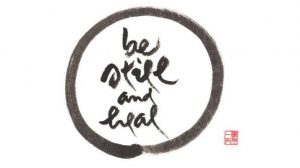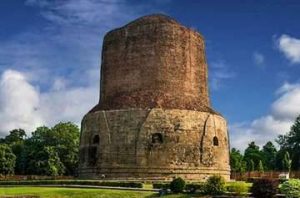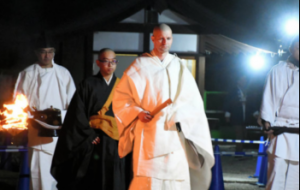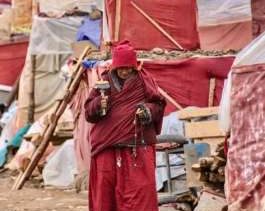Introduction
For people who try to adopt a scholastic approach to Buddhism, the issue of “rebirth” often poses a vexing problem. Initially, one may try to dismiss it as superstition and unscientific and just ignore it. However, as one delves into various Buddhist doctrines and sutras, one would inevitably come to the realization that the subject of rebirth is something so fundamental to the understanding of Buddhism that it must be addressed somehow. However, looking at the different teachings of various schools of Buddhism, one is met with a bewildering (and sometimes apparently contradictory) interpretations of rebirth. It makes one wonder whether the Buddhists themselves in fact cannot agree on what rebirth really it. During a course on Theravada Buddhism that this writer attended at the HK University in 2006, the students asked questions about rebirth over and over again during the whole course and apparently were not getting satisfactory answers —— answers that they would like to hear . The purpose of this article is to attempt to explore this issue of rebirth and try to make some sense out of it.
Past and Future Lives
Ever since time memorial, man has been fascinated with the secrets of life. Who am “I “? Where do “I” come from? Why was “I” born here and not anywhere else? Where do “I” go after death? Many cultures around the world have a theory of past and future lives. Most of these theories have something in common: there is a spirit/agent/soul (thereafter called “soul” for the rest of this article) which transmigrates from one life form to another. Details, however, may differ somewhat. Thus the West Africans believe that a newborn baby is a deceased relative coming back from the dead (Note 1) and that the spirit enter the infant at birth. In others, such as in pre-Buddhism Indic religion, the embryo is impregnated with a soul while in utero. Cross species re-incarnation is possible in some schools of thoughts like Plato’s and the Eskimos in North America (Note 2). It has been postulated that cross-species re-incarnation may be one of the reasons for vegetarian habits in certain cultures.
In Buddhist literature, there are extensive references to past lives of various people including the Buddha. Reading it literally, one would certainly have the impression that the Buddha endorsed the Vedic conception of a transmigrating soul (atman in Sanskrit or atta in Pali). However, if one looks at the three basic doctrines of Buddhism: Suffering (dukkha), Impermance (anicca), and No-self (anatta), it is very clear that there is no self ( atman) available to transmigrate , so how come that there is rebirth ?
Before we try to understand the doctrine of No-self, we must look at the doctrines of Dependent Origination (pa?icca-samuppada) and Kamma.
Dependent Origination, Kamma, and Re-birth
Buddhists see life in the universe as one continuously changing entity (or more graphically, a stream of constant moving current). Everything within it is interdependent on one another. We may think that we are independent beings. In fact we are not exactly that—— our everyday life and even our thoughts are being constantly molded and changed by our surrounding environment. As an example, if you drive your car onto the motorway, the lane that you take or your speed are constantly affected by the other cars around you. You may have an idea of your destination, but how you get there is determined not solely by you but by the traffic condition at the time. You may even never get to your destination because of traffic diversion.
Kamma (or more popularly known as Karma in Sanskrit) is often defined as volition or intention in Buddhism (Note 3). Your deeds and thoughts will affect other people around you. Even if you sit there and do nothing, your thoughts will affect your own consciousness and change it from time to time and thus have karmic consequences. Karmic forces are the driving force behind sentient beings’ continuous cycle of rebirth. Because of it , at the moment of death, some “energy” ( for want of a better word), as a result of karmic forces, will arise and lead to the “becoming” ( actually a better word than “re-born”)of a new consciousness in a new life form. This new life-form is not exactly you, nor is it “not- you”. An arahat ( an enlightened being), who has attained nirvana in this life, will continue to live , but since he is empty of the roots of kamma( greed, hatred and delusion), he will not accumulate any more fresh kamma and thus will not be “re-born”, or rather “re-become” after his death.
Now, for most people, this concept of re-birth ,or better viewed as “re-becoming”, is really alien and hard to grasp and contrary to most people’s idea of rebirth. One may even legitimately ask: if the person in the next life is not really myself, what is the point of leading a moral life in order to ensure a favourable re-birth? The answer is that the Buddhist ethical disciplines should be aimed at attaining nirvana in this life and this alone would be adequate reason to justify a moral life. Besides, as each one of us is part of the universe (much like each ant is part of a colony of ants), we have a moral responsibility to our brethrens. Further, the Buddha would have pointed out that the question is wrongly put because there is really no “myself” as such to start with. If you think that you have a permanent, unchanging, self which is eternal, it is just a illusion. Apart from the Five Aggregates (Note 4) , there is no such self according to Buddhism.
But then, people will ask: what about the teaching in the Mahayana schools of Buddhism? The search for the new Dalai Lama (after the death of the previous Dalai Lama) in Tibetan Buddhism obviously smells of re-incarnation in the usual sense. And what about the Pure Land School of re-birth in the PureLand by recitation of the Buddha’s name? On a more subtle level, is not the so called ?laya-consciousness of the Consciousness-Only School an attempt to smuggle a self through the back-door ?
To understand the development of these teachings of different schools one needs to understand the principle of Skilful Means and the Doctrine of the Two Kinds of Truth.
The teaching of Skilful Means ( or Skill-in means)
During his 45 years of teaching, the Buddha taught a lot of people from different backgrounds with different intellectual abilities. It is not surprising that he employed different languages and ways to convey his messages. Later, Buddhist monks who tried to spread the Buddha’s teachings around the world were faced with the problem of trying to adapt to the local community and culture. Their mission was not really helped by the large variety of , and sometimes apparently contradictory, schools of literature, all claiming to be the original teachings of the Buddha. This is where the doctrine of “Skilful Means” comes in handy.
Thus in the famous passage from Chapter three of the Lotus Sutra (Note 5a), a father lies to his three children to lure them out of a house which was on fire. The children are ignorant of the danger and continue to play in the house. The father promises them three different types of toy-carts and then, when the children are safely out of the house, give them only one vehicle. The sutra justifies the action of the father by saying that only one of the vehicles is the most superior and that the children should not be given inferior vehicles. The meaning of this parable is obvious: the end justifies the mean so long as the intention is good.
In this context, one may also note that the Buddha taught two kinds of truth—— the Conventional Truth and the Ultimate Truth. Thus, although the ultimate truth is that we are all empty of an inherent existence, nevertheless , in order to communicate effectively with one another on a mundane level , we still have to use conventional terms like “ I” and “you”, “being” ,”individual” (Note 5b)
Pure Land, Pure Mind
The teaching of the PureLandSchool is basically that meditation/visualization (of the PureLand, Amit?bha Buddha) and of oral recitation of the Buddha’s name will result in re-birth in the PureLand at the time of death. This primary focus on re-birth makes it necessary for us to examine in some detail the PureLand method in this article.
The Pure Land Method seems to be an incredibly naïve/simple method for a lot of intellectuals. However, it has been pointed out that:
When a practitioner (of the PureLand method) is busy visualizing the Buddha or reciting the Buddha’s name, he cannot commit transgression or violate the Buddhist precepts. Therefore, he has effectively fulfilled the p?ramit? of Discipline. Likewise, reciting the Buddha’s name with a focused mind is nothing less than fulfilling the p?ramit? of Concentration Once Concentration is achieved , the practitioner’s Mind becomes empty and still, leading to the emergence of his innate wisdom—- the Wisdom of the Buddhas. (Note 6)
Thus it can be seen that the PureLand method is just another path to liberationwithin the Noble Eightfold Path (Note 7) to attain Enlightenment
But what about the part about being actually re-born in the PureLand ?
This is probably the most commonly asked question by critics of the PureLand method. Kenneth Tanaka (Note 8) gave a clear and unequivocal answer:
From the ultimate standpoint, the PureLand is not to be taken as an existence place, in the way ordinary beings are predisposed to understand it…. Having said that , however, the Pure Land proponents acknowledge that the capacity of ordinary ,unenlightened people is such that they have no choice but to regard the Pure Land as ontically existent…….The objective presentation of the Pure Land accords with the emotional and intellectual make-up of ordinary beings whose capacity affords only a literal understanding of the sutra description…..Only through their relationship with the Pure Land of form can the ultimate reality be realized .
But how can we possibly realize enlightenment through grasping at forms of PureLand? Surely, this is contrary to fundamental Buddhist practice. Here, Tanaka also quoted the words of a Pure Land Patriarch , T’ao-Ch’o :
Although this is grasping onto form, such grasping does not constitute binding attachment . In addition, the form of the PureLand being discussed here is identical to form without defilements, form that is true form.
Accordingly to this explanation, therefore, an ordinary being is able to engage the ultimate realm without that person fully understanding its ultimate nature.
This concept that, at the absolute level, everything (and that includes the PureLand and Amit?bha Buddha) is Mind-Only , and as such are products of our Mind, is accepted by many people (Note 9) :,
For those who have attained the pure karma of re-birth in the PureLand, the Mind in Samadhi at the time of death is precisely the Mind reborn in the PureLand. As soon as the thought [of rebirth] arises, rebirth is achieved. Thus, the Meditation Sutra states that “the land of Amit?bha Buddha is not far from here!” Moreover, the power of karma is inconceivable. In the space of one thought, rebirth in the PureLand is achieved .This is analogous to a person asleep and dreaming. Although his body is on the bed, his Mind is traveling all over, to all worlds, as though he were awake. Rebirth in the PureLand is, generally speaking similar to this example …..” ( Note 10)
All these may seem to satisfy the doubts of the people who have reservations about the PureLand method———that is, until they read comments like those from Dharma Master Thich Thien Tam (Note 11) :
The visiting Zen Master …did not yet clearly understand the{meaning of} True Mind. Therefore, as soon as he heard that “ the Pure Land is Mind-Only, the Self-Nature is Amit?bha Buddha”, he hastily concluded that our Mind ,if pure , is precisely the Pure Land, is precisely Amit?bha Buddha— and that there is no other Land of Bliss nor any Buddha called Amit?bha. Such deluded individuals, attached to emptiness, can be found everywhere . In general, they reject the existence of Buddha Amit?bha, the WesternPureLand, demonic or celestial realms………These individuals are usually vain and conceited, considering themselves intelligent and lofty, while deprecating others as being attached forms……. In truth, when they write commentaries or translate sutras, they have the intention of propagating the Dharma, but in the end, they vilify the Three Treasures ( Buddha, Dharma, Sangha) instead.
Dharma Master Thich Thiem Tam’s position is like this: if we understand Birth as meaning real Birth , we stray in the direction of Eternalism: if we understand Non-Birth as meaning that there is no actual birth , we commit the error of Nilhilism. Birth and yet no Birth, no Birth and yet Birth , is truly the “ultimate meaning”. In fact, this is very similar to what the Buddha has always taught as in the Kaccayanagotta Sutta of the Samyutta Nik?ya: “Not approaching either extreme[of existence and non-existence] , the Tath?gata( the Buddha) teaches you a doctrine by the middle .”
Conclusion
One of the most classic explanations of the process of re-birth in Buddhism is the analogy of a flame being passed along. Thus the flame of a match stick may be used to give rise to the flame of a piece of paper before the former dies out. The paper may then be used to light a piece of coal before it dies out in its turn. The flames of the match, paper and coal are not exactly the same nor totally different from one another.
In more modern terms, the transmigration from one life to another may also be envisaged as a transference of energy source (the ?laya consciousness of the Yog?cara school?) from one life to another. Remember Einstein taught us that energy and matter are interchangeable.
It should be very clear the idea of re-birth in Buddhism is not really the same as the idea of re-birth in the mind of most people (even among self-confessed devout Buddhists !). In fact the choice of the word “re-birth” is unfortunate. Perhaps the word “ re-becoming” may be more appropriate. But, then, the term “re-birth” may have more appeal for common people. Before one labels this as intellectual snobbery, one may want to consider the case of a poor fisherman living along the coast of ancient China . Now, he has to struggle to make a subsistent living all his life to support his family in the face of natural and man-made disasters. The consolation of the thought of subsequent re-birth in the PureLand in a future life if he follows a moral life and religious devotion may be the sole driving force to sustain his efforts in this life. Who are we to tell him that: well, it will not be exactly you who will be re-born there.
After all , as Bhikkhu Bodhi has pointed out, there is no logical ( and , I would add, scientific) way to prove the validity of rebirth and kamma and that the concept of rebirth make a lot of sense in that it make our universe ethically meaningful. How past volition can influence the development of a new zygote lies beyond the range of scientific explanation (Note 12). At the end of the day, it may be more a matter of how much faith one has got in the Buddha’s words as carried forth in the last 2500 years.
Finally one must decide how important it is for one to have an ultimate answer to this question of rebirth. In the famous simile of the poisonous arrow taught by the Buddha: one should proceed immediately to treat a person struck by a poisonous arrow. Finding out where the arrow came from and who fired the arrow should not be considered as the pre-requisite for starting treatment. Since it is unlikely that any interpretation of re-birth can be proven on a scientific level, perhaps we could do well by following the example of the late famous writer of Zen Buddhism Mr. D .T .Suzuki who sticks himself to one interpretation (Note 13) which he considers to be inspirational and “full of poetic suggestions”, and then———- just leave it at that.
END
Reference and Notes :
1. Karma and Rebirth—- a Cross Culture Study by Gananath Obeyesekere Motilal Banarsidass Publishers, Private Limited , Delhi, 2006 ( page 20)
2. ibid, page 37.
3. The word Kamma ( or Karma , in its more popular Sanskrit form) has a slightly different meaning in pre-Buddhism Vedic India which referred to one’s deeds that would affect one’s future life. Thus one can accumulate good kamma to ensure a fortunate rebirth by sacrificial offerings.
4. The Five Aggregates are, a) Form ( Matter), b) Feelings, c) Perceptions, d) Mental Formations, e) Consciousness
In Buddhism, a person is made up of the above five things and nothing more beyond that. In particular, it should be noted that “consciousness’ should not be regarded as the equivalent of the “soul” as consciousness is always “consciousness of something”. If there is nothing to be conscious of, there is no consciousness arising. All five aggregates are interdependent on one another and interdependent on our surroundings. There is therefore no constant “me” as such as we are all changing from one moment to another. In the Pali Canon, the presence of an unchanging consciousness which transmigrate is categorically denied.
5a. The Lotus Sutra was probably compiled in the first century CE in Kashmir, during the fourth Buddhist Council of the newly founded Mahayana sect of Buddhism, more than 500 years after the death of Sakyamuni Buddha. It is thus not included in the more ancient Agamas of Mahayana Buddhism, nor in the Sutta Pitaka of the Theravada Buddhists, both of which represent the older Buddhist scriptures which can be historically linked to Sakyamuni Buddha himself.
The Lotus Sutra appears to be a discourse delivered by Sakyamuni Buddha himself towards the end of his life. The tradition in Mahayana states that the Lotus Sutra was written down at the time of the Buddha and stored for five hundred years in the realm of the dragons (or Nagas). After this, they were re-introduced into the human realm at the time of the Fourth Buddhist Council in Kashmir. The tradition further claims that the teachings of the Lotus Sutra are higher than the teachings contained in the Agamas and the Sutta Pitaka (the Sutra itself also claims this), and that humankind was unable to understand the Lotus Sutra at the time of the Buddha (500 BCE). This is the reason given for the need to store the Lotus Sutra in the realm of the dragons for 500 years, after which humankind was able to understand the Lotus Sutra.
5b. The Madhyamaka school takes this doctrine one step further and makes it the cornerstone of its philosophy :
The Buddha’s teaching of the dharma relied on two truths, The common truth of the world and what is ultimately true. They who do not know the division of the two truths, do not know the deep reality of the Buddha’s instructions. The ultimate is not taught without resorting to the conventional. Without having gotten to the ultimate nirvana cannot be approached.
6. Quotes taken from Pure Land Buddhism— Dialogues with Ancient Masters ,Edited and Published by the Sutra Translation Committee of the United States and Canada, Third Edition(1992), page 2.
7. The Noble Eightfold Path is the path to liberation and attainment of nirvana. In fact , all of Buddha’s teaching can be said to be related to this in one way or another . It is called the eightfold path because it consists of the following:
1. Right Understanding 2. Right Thought 3. Right Speech 4. Right Action 5.Right Livelihood 6. Right Effort 7. Right Mindfulness 8. Right Concentration
These eight factors are often grouped in three interdependent groups : 1. Moral Discipline 2. Concentration 3. Wisdom . The three groups should be cultivated together instead of one after another.
8. Where is PureLand? by Kenneth K Tanaka In Pacific World , Fall 1987 ( as quote in Pure Land Buddhism— Dialogues with Ancient Masters ,Edited and Published by the Sutra Translation Committee of the United States and Canada, Third Edition(1992), page 160-161.
9. ?b?g?b???? ——??a???~?h?ۡA????F??ı?b?X?? 2005?~?C???ĥ|???C
10. Ten Doubts about Pure Land by Tien Tai Patriarch Chi I ?b?g?̺ý?—??.?̤j?v( 538-597 A D) as quoted in Pure Land Buddhism— Dialogues with Ancient Masters ,Edited and Published by the Sutra Translation Committee of the United States and Canada, Third Edition(1992), page 30-31.
11. ibid. page 53.
12. Does Rebirth Make Sense? By Bhikkhu Bodhi, in Buddhist Publication Society Newsletter cover essays No. 46 and 47 ( 3rd mailing, 2000 and 1st mailing , 2001)
13. Suzuki considers the primordial force for things coming into existence being trisna ( or tanha in Pali, the literal meaning being “thirst” ) which can take various form if and when it wants to assert itself . As trisna is inexhaustible and all permeating, the forms it can take is infinitely varied. For details , please see Mysticism : Christian and Buddhist by D T Suzuki 2002 edition published by the Routledge , N. Y. , page 100 to 112.














